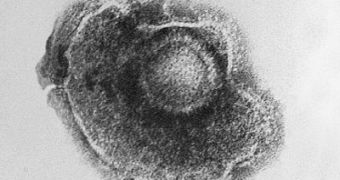In a new paper appearing in the March issue of the respected Journal of General Virology, Japanese researchers from the Saga University reveal some of the secrets associated with how viral agents are able to move past the species barrier. This ability implies that viruses infecting one type of mammal can, for example, move to another, but it could also mean that plant viruses could move to animals and vice-versa. This field of research is very complex, because there are many microorganisms out there today that pose a huge threat to humans, but that have yet to have their origins pinned down.
Scientists have proposed for a long time that the key to understanding the mechanisms the viruses employ in jumping the species barrier is to peer into the genetic processes, alterations and mutations that make this easier. The new investigation could also provide a new avenue of research into why exactly animal diseases occur in the first place, the team believes. The new work was conducted on the plant mosaic disease triggered by the turnip mosaic virus (TuMV), upon contact with aphids. The scientists watched closely as the virus adapted to infect another plant species.
Eventually, they noticed how the microorganism jumped to a new host, the radish (Raphanus sativus). They demonstrated via genetic analysis that the new version of TuMV featured an average of 140 additional mutations, all of which were absolutely crucial to its new abilities. In the variant that infected the regular host, the turnip (Brassica rapa), the viral agent featured none of these new capabilities. The team was also able to discover that the genes coding for the proteins P3 and CI were the centers for most mutations, ScienceDaily reports.
“Revealing the subtleties of the interaction between viruses and plant resistance mechanisms could help breeders produce better crops, for example by selecting strains that block changes to TuMV. We are trying to understand how novel viruses emerge – particularly how viruses are able to cross the species barrier. This in turn gives us a better idea of how pandemics are generated and how best to stem their spread,” Saga University Professor Kazusato Ohshima, who has also been the leader of the new investigation, says.

 14 DAY TRIAL //
14 DAY TRIAL //